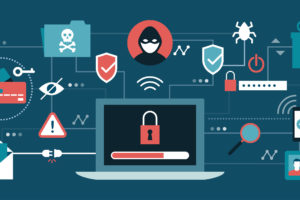With the political cycle revving up in the United States, fake news, social media manipulation, and more have raised concerns. One of the most insidious forms of misinformation today is called “deepfake.”
A deepfake refers to a video where the faces have been swapped using AI, or a neural learning network. Some of these videos can be quite whimsical, like this Mona Lisa deepfake. The classic painting has a variety of lifelike expressions and convincingly appears to talk. The practice was even used in Star Wars to create convincing new footage of a young Carrie Fisher.
However, deepfake technology can be harnessed for nefarious purposes. By swapping faces with AI, it can be used to create videos where politicians become the mouthpiece of any belief system. And, because it’s so convincing, it can be hard to find the truth.
According to Forbes, “When researchers at the University of Washington posted a deepfake of President Barack Obama and then circulated it on the Internet, it was clear how such technology could be abused. The researchers were able to make the video of President Obama say whatever they wanted it to say.”
As the election draws closer, we’ll likely see more deepfakes. While it’s unlikely that either political party will directly espouse the use of deepfake technology, that might not stop the members of their political parties from creating videos that support their agendas.
How to Guard Against Deepfakes
How can deepfakes affect your business? While it’s unlikely that the average business-owner will attract the attention of someone who will create deepfaked videos of them, deepfakes have the potential to spread incorrect business information. This false information can affect business practices as well as stock prices.
Here’s how to be on your guard against deepfakes:
1) Always question the source. An interesting or dramatic video may get plenty of shares — shock value often drives content’s viral success. However, check to see if the video was posted by a legitimate news sources. Videos on YouTube without official citations should be considered suspect. Similarly, don’t trust unverified videos posted on Facebook.
2) Examine other perspectives. Before taking a video as fact, see if there are other corroborating sources. If you can find more sources that verify the information, the chances are higher that the video is factual.
3) Google “video name + deepfake.” This simple trick will help you determine whether or not a video has been faked. If there’s a lot of discussion surrounding the video, it’s likelier that the video is false.
Vodigy helps small and medium-sized businesses make the most of technology. Contact us today!




